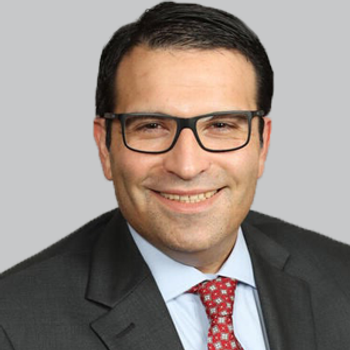
Deep Brain Stimulation for Essential Tremor May Induce Dysphagia
During DBS stimulation “on” periods, all patients experienced varying degrees of dysphagia, with significant improvements when stimulation was “off.”
Sriramya Lapa, DMSc
The results of a study published in Annals of Clinical and Translational Neurology suggest that deep brain stimulation (DBS) of the ventral intermediate nucleus (VIM) may have an impact on swallowing physiology in patients with
Overall, after stimulation off time, 100% of patients (n = 12) in the small cohort study experienced statistically significant improvements in swallowing function. During DBS stimulation on periods, dysphagia was identified in all patients with 42% showing mild, 42% moderate, and 16% severe dysphagia. The mean flexible endoscopic evaluation of swallowing (FEES) dysphagia sum score amounted to 16 (±10; range, 5—42).
“Although dysarthria is a well‐known side effect of VIM‐DBS, this is—to the best of our knowledge—the first systematic and instrumental‐based report on dysphagia as a VIM‐DBS‐induced adverse effect,” study author Sriramya Lapa, DMSc, Department of Neurology, Goethe University Hospital Frankfurt, and colleagues wrote. “In all investigated cases, dysphagia was confirmed using FEES when DBS was on. After DBS deactivation dysphagia significantly improved in all patients, the mean improvement of flexible endoscopic evaluation of swallowing dysphagia sum score amounting to 80%.”
In the stimulation off condition, the mean FEES dysphagia sum score decreased to 3 (±2), equating to an average improvement of 82% in comparison to the stimulation on period (P = 0.003). Dysphagia severity was classified as mild in 25% (n = 3), moderate in 0.8% (n = 1), and severe in 0.8% (n = 1). In comparison, 58% (n = 7) of subjects had swallowing function evaluated as normal.
WATCH NOW:
Lapa et al. acknowledged that age- or disease-related changes in swallowing could not be ruled out as reasons for lack of full recovery due to a lack of presurgical FEES assessment. “Likewise, the deactivation period of the neuro‐stimulator may not have been long enough to completely resolve swallowing function. At present, the amount of time needed for the DBS to be turned off in order to allow for a noticeable change in the patient's swallow remains elusive and should be investigated in future studies,” they wrote.
The mean age of the cohort was 69 years (±9) with an average disease duration of 33 years (±21). The average time from electrode implantation to dysphagia assessment was 26 months (±24), and the time between DBS and the onset of subjective dysphagia was 12 months (±10). The average time between DBS deactivation and stimulation off time FEES was 33 hours (±28; range, 1—96 hours).
Every patient experienced a significant tremor reduction during stimulation on time with significant improvement in hand function, handwriting, and activities of daily routine—both self‐reported and neurologist observed. In addition to dysphagia, the study population reported additional adverse events (AEs), including dysarthria (58%; n = 7), gait ataxia (33%; n = 4), and limb ataxia (17%; n = 2). Neurological examinations suggested there was no evidence of concomitant diseases causing dysphagia.
“The most common FEES findings during stimulation on were premature spillage of the entire bolus and/or of bolus parts with the consequence of quick and uncontrolled overflow into laryngeal vestibule in 83% (n = 10) as well as predeglutitive penetration in 58% (n = 7) and predeglutitive aspiration in 25% (n = 3) of cases,” Lapa et al. wrote. In total, 71% (n = 5) of the penetration and all the aspiration (n = 3) events were directly related to the premature spillage.
All consistencies—liquid (91%; n = 11), semisolid (83%; n = 10), and solid (75%; n = 9)—reported swallowing impairment with premature spillage occurring mostly during the swallowing of liquid textures. Half of the cohort experienced oral residue with fragmented bolus transfer. Pharyngeal residues were reported by about 60%, primarily present when semisolid (n = 7) and/or solid food (n = 8) were applied.
“Noteworthy, swallowing completely recovered in two patients, whereas in the remaining 10, subtle pathological findings maintained (range 1—8 points),” the authors noted. A correlation of dysphagia severity and total electrical energy delivered was statistically significant (r = 0.71; P = 0.028).
“Professional assessment of swallowing impairment should be routinely implemented in patients with ET before and after surgery. For quantification of dysphagia, the applied FEES dysphagia score is a suitable tool to evaluate treatment-induced improvement or worsening of swallowing function in patients with movement disorders and tremor beyond Parkinson's disease,” Lapa et al. concluded.
REFERENCE
Lapa S, Claus I, Reitz SC, et al. Effect of thalamic deep brain stimulation on swallowing in patients with essential tremor. Ann Clin Trans Neurol. Published online June 16, 2020. doi: 10.1002/acn3.51099.
Newsletter
Keep your finger on the pulse of neurology—subscribe to NeurologyLive for expert interviews, new data, and breakthrough treatment updates.


































